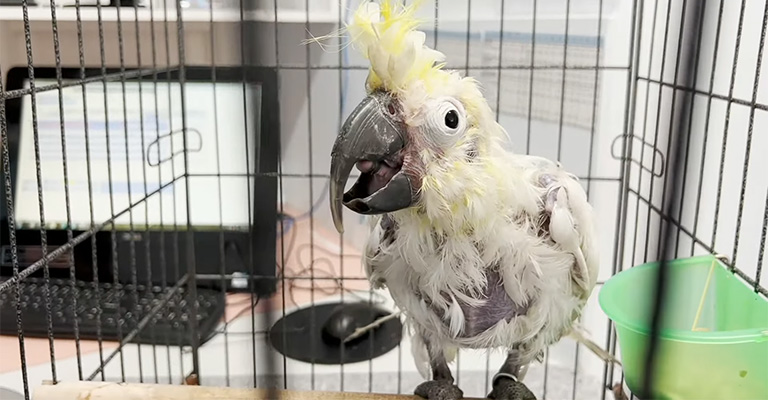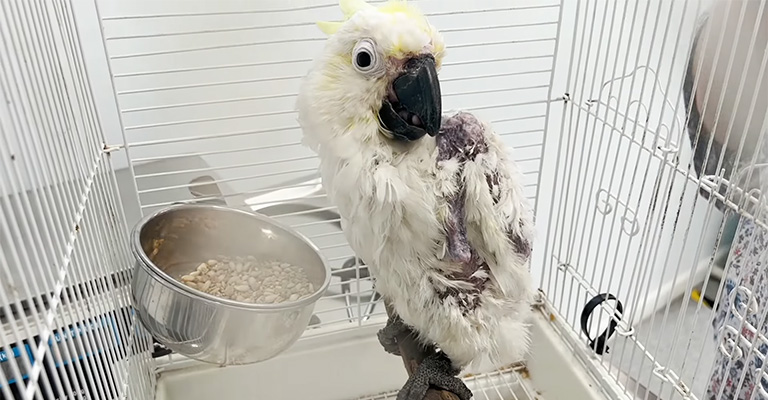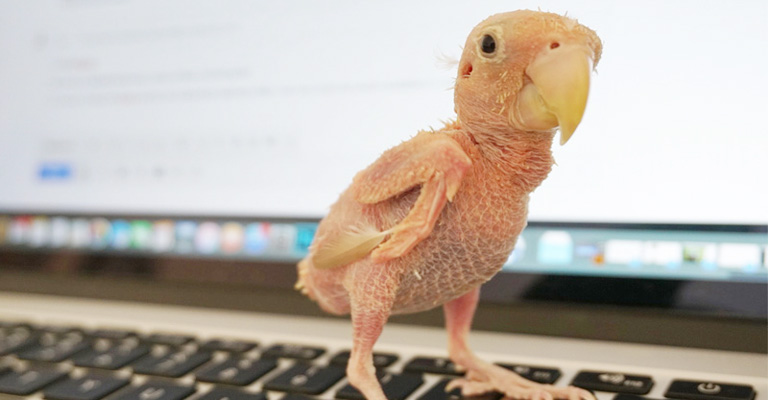As we discussed earlier, birds may face life-threatening infections like aspergillosis, psittacine, and more if neglected.
We covered an informative article on Aspergillosis. This time, we are about to discuss another serious disease of birds before it gets too late.
Unlike Aspergillosis, Psittacine is a viral disease. The primary targets are parrots and other psittacine birds, such as cockatoos, macaws, and lovebirds.
So, do you have a beautiful pack of the Psittacine birds in your home? Then, you must get deadlock about the Psittacine Beak and Feather Disease.
Let us help you along the way. Our insightful article will help you learn about this dangerous disease and prevent it before it gets out of hand.

Psittacine Beak and Feather Disease
The disease can be devastating for your birds. The virus responsible for Psittacine Beak and Feather disease is the Beak and Feather Disease Virus (BFDV).
It can ultimately lead to severe abnormalities of feathers and beaks, immunosuppression, and even death if not timely checked.
Hence, you should get started already to understand the signs, treatment options, and causes of PBFD.
So, what are the reasons behind PBFD? And how does a bird get affected? Here’s what we have learned so far,
- A bird can easily get affected by an infected bird and its feathers, beaks, and secretions.
- It is not always a bird. Sometimes contaminated surfaces, such as cages, perches, or feeding dishes also spread the virus.
- Sometimes birds consume contaminated food and water. And, also get in touch with feces of other birds.
- Although rare but not impossible, airborne viral particles can be another possible mode of transmission.
- Additionally, infected parents can also pass BFDV to their offspring via infected eggs or through direct contact during feeding and grooming.
These are ways, how your birds may get PBFD. We hope this will make you careful enough to ensure the proper hygiene of your birds. Next, we will discuss the early signs your birds will show if they are affected.
Psittacine Beak and Feather Disease – Signs

It depends on three major factors,
- Age of the bird
- The strain of the virus
- Bird’s immune response
Based on the three factors, your birds may show signs differently. Such as,
It Starts with Feathers: One of the hallmark symptoms of PBFD is feather abnormalities. It can range from misshapen feathers, excessive feather down, and poor feather quality to complete feather loss.
Beak & Nail Abnormalities: Birds that are infected with the virus will show beak abnormalities. This may include overgrowth, and deformities like cracking, or flaking. It will become extremely uncomfortable for the birds to eat and preen with such additions in beaks.
Additionally, PBFD can also lead to overgrown and deformed nails. Birds will have a hard time perching and climbing.
Birds Become Weak: PBFD weakens the bird’s immune system. It makes them more vulnerable to secondary infections. Birds with PBFD often develop respiratory and gastrointestinal infections. This may also put your birds in lethargy.
Additionally, recurrent or chronic infections are common in birds with PBFD due to the compromised immunity.
Loss of Weight: Birds will lose interest in eating. Additionally, coupled with the energy expended in trying to maintain body temperature due to feather loss, it will often lead to significant weight loss in affected birds.
Stress, Depression & Change in Activity: Based on what’s going on in their body, birds may display signs of stress, depression, changes in behavior, or aggression due to their discomfort and pain.
In the worst cases, PBFD can also lead to a shortened lifespan. Affected birds will slowly surrender to the disease or secondary infections.
Feather Discoloration: Birds may lose the vibrance of their feathers. Feathers may become dull and faded.
Some birds may also be asymptomatic carriers of the virus, meaning they wouldn’t show any symptoms but can silently infect other birds. It’s also important to note that, the development of PBFD can be cyclic.
Is there a cure for Psittacine? What do the experts say? Let’s find out.
Treatment of Psittacine Beak and Feather Disease

Unfortunately, there is no cure for PBFD. You can additionally offer comfort and support to the infected birds. And also, reduce the intensity of the secondary infections.
But remember that, prevention is better than looking for a cure. Here’s what you can do,
After PBFD Measures,
1) Administer antibiotics to treat or prevent bacterial infections.
2) Provide a well-balanced diet and sometimes hand-feed the birds to offer proper nutrition.
3) Promote clean and healthy living conditions to reduce the risk of secondary infections.
4) Offer supplemental heat and fluids to dehydrated birds and monitor their condition closely.
5) Isolate infected birds to prevent the spread of the virus to healthy individuals.
6) You can also offer a comfortable environment for your birds. It may reduce their stress.
Before PBFD Measures,
1) A work of patience, but you should quarantine new birds for at least 60 days before introducing them to the existing flock.
2) You should perform regular tests for PBFD, especially in breeding birds or birds with unknown histories.
3) In some places, vaccines are available for PBFD. You should consult with your veterinarian regarding its use.
4) You can introduce strict biosecurity measures (BSM) to prevent the exposure of the virus.
Sometimes it might be inevitable to prevent PBFD. But we shouldn’t lose hope. It is our duty to offer them a place of comfort and make the journey easier for them.
Birds with Psittacine Beak and Feather Disease (PBFD) can live with the condition. However, their quality of life can vary significantly.
Wrapping Up
We are almost at the end of our article. Sometimes, your bird may not show any sign of the disease but still may carry the virus. In case you suspect that your bird has PBFD or if you notice any of these signs, it is essential to seek immediate veterinary care.
The last thing we would want is to have other birds infected and take no action about it. We hope our article is insightful to you. You can get more useful articles like this as we share regular informative articles on ensuring a better life for our feathered friends.
Leave a comment below and let us know how’s your little avian friend doing. Also, don’t forget to share our article with your friends.